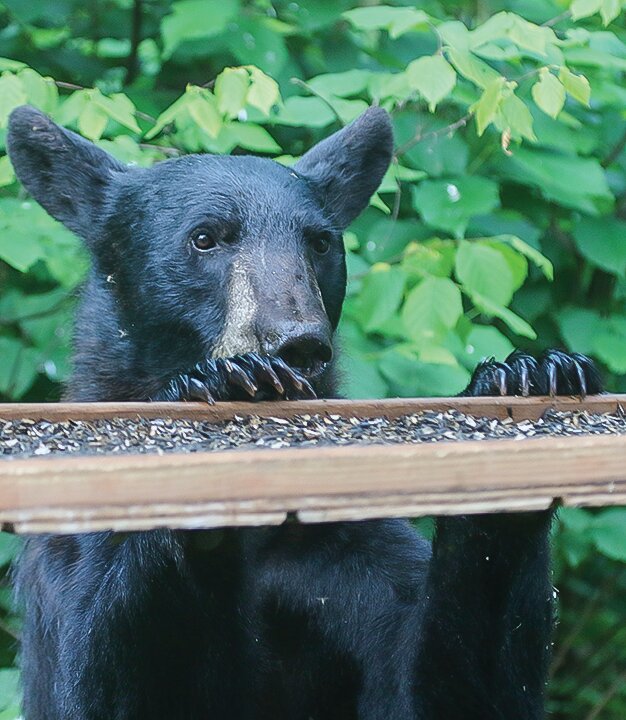Support the Timberjay by making a donation.
Nuisance bear reports up sharply
Area wildlife manager offers tips to prevent problems
REGIONAL— The abundant rain that has fallen over the past several weeks has left the area poised for a good berry crop later this summer. In the meantime, however, the wild food supply is …
This item is available in full to subscribers.
Attention subscribers
To continue reading, you will need to either log in to your subscriber account, below, or purchase a new subscription.
Please log in to continue |
Nuisance bear reports up sharply
Area wildlife manager offers tips to prevent problems
REGIONAL— The abundant rain that has fallen over the past several weeks has left the area poised for a good berry crop later this summer. In the meantime, however, the wild food supply is somewhat limited and that’s bringing unusual numbers of bears to town or to rural residences looking for something to eat.
“All Iron Range towns are getting inundated with bears looking for food right now,” said Jessica Holmes, the DNR’s Tower area wildlife manager. “While we wait for natural foods to produce, homeowners and visitors must remain vigilant to remove attractants such as garbage, bird feeders, barbecue grills, or dog food,” said Holmes.
While the anticipated strong berry crop should eventually alleviate the current influx of nuisance bears, until that happens, Holmes recommends that homeowners or visitors take the following steps:
• Never feed or approach bears
Intentionally feeding bears or allowing them to find anything that smells or tastes like food teaches bears to approach homes and people looking for more. Bears will defend themselves if a person gets too close, so don’t risk your safety or theirs.
• Secure food, garbage and recycling
Food and food odors attract bears, so don’t reward them with easily available food, liquids or garbage.
• Remove bird feeders when bears are active
Birdseed and grains have lots of calories, so they’re very attractive to bears. Removing feeders when bears are active is the best way to avoid creating conflicts.
• Never leave pet food outdoors
Feed pets indoors when possible. If you must feed pets outside, feed in single portions and remove food and bowls after feeding. Store pet food where bears can’t see or smell it.
• Clean and store grills
Clean grills after each use and make sure that all grease, fat and food particles are removed. Store clean grills and smokers in a secure area that keeps bears out.
• Alert neighbors to bear activity
See bears in the area or evidence of bear activity? Tell your neighbors and share information on how to avoid bear conflicts. Bears have adapted to living near people. Now it’s up to us to adapt to living near bears.
Bear preparedness and response
Bears and people meet under a variety of circumstances and in many cases encountering a bear can be a positive, memorable experience. Black bears, by nature, are wary of people and not normally aggressive, according to the DNR. They are, however, large, powerful and surprisingly fast-moving animals. Anyone who encounters a bear should have healthy respect for it but at the same time, do not feel that it is an inherent threat.






